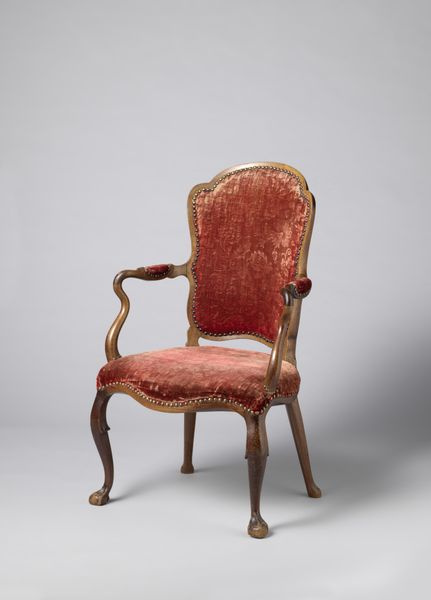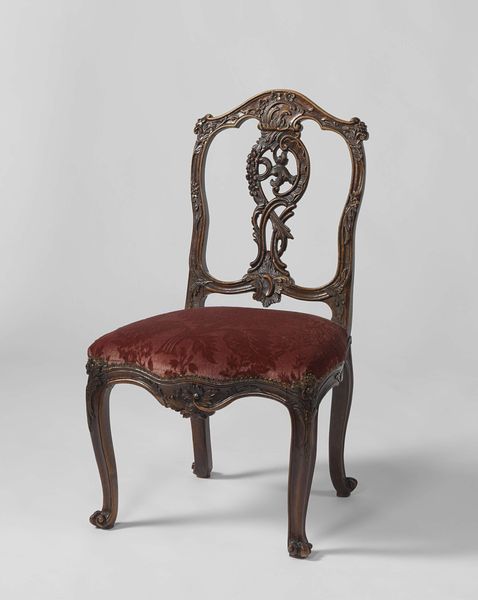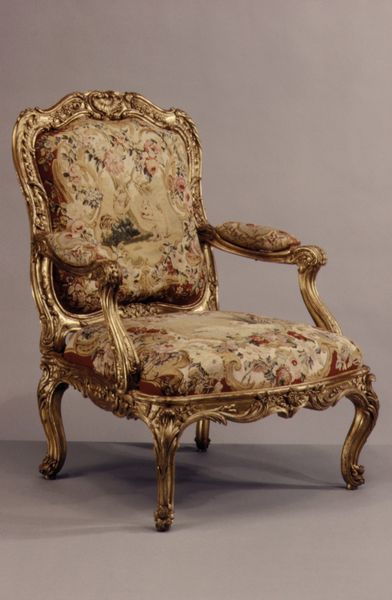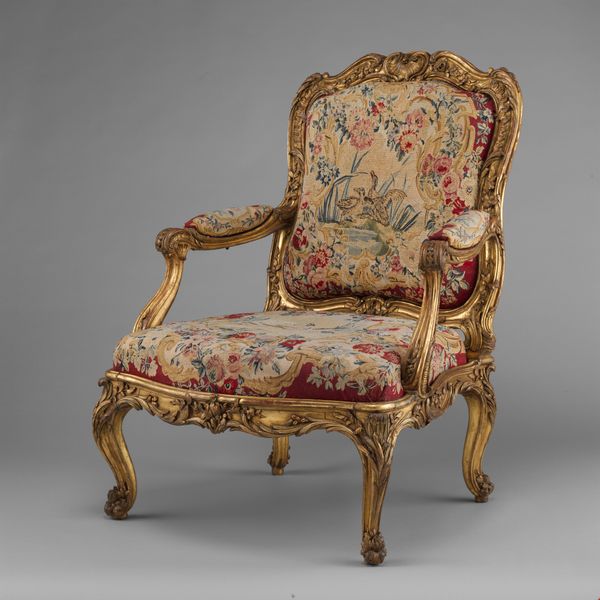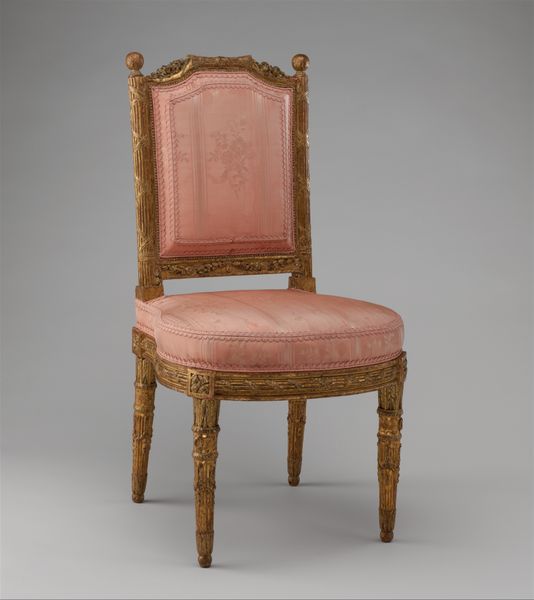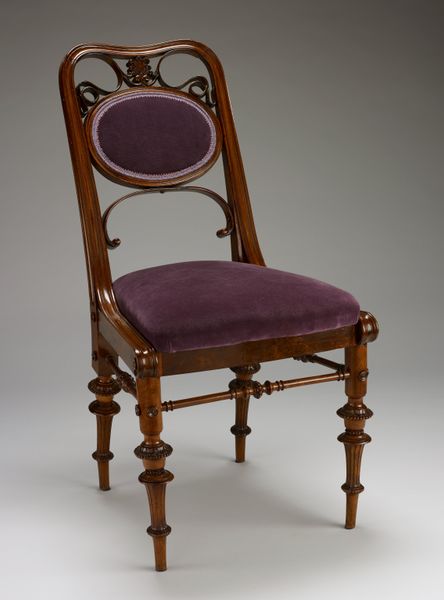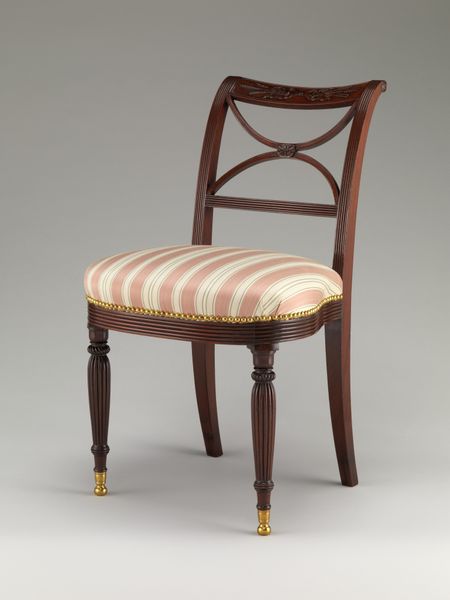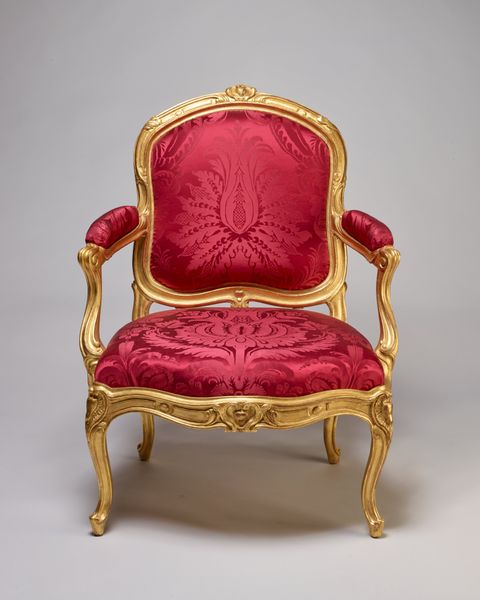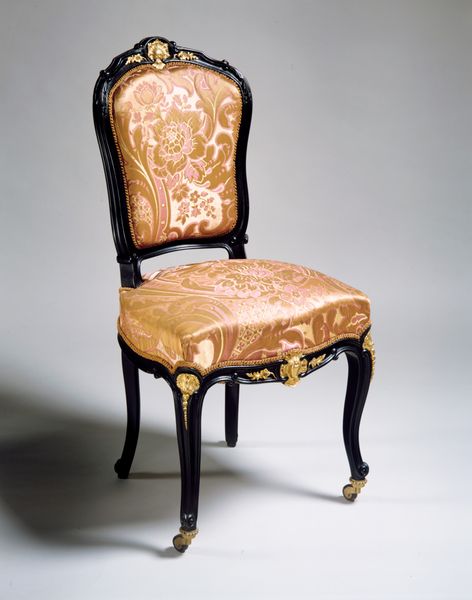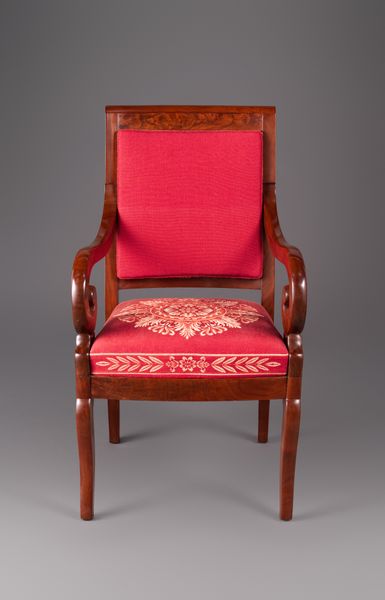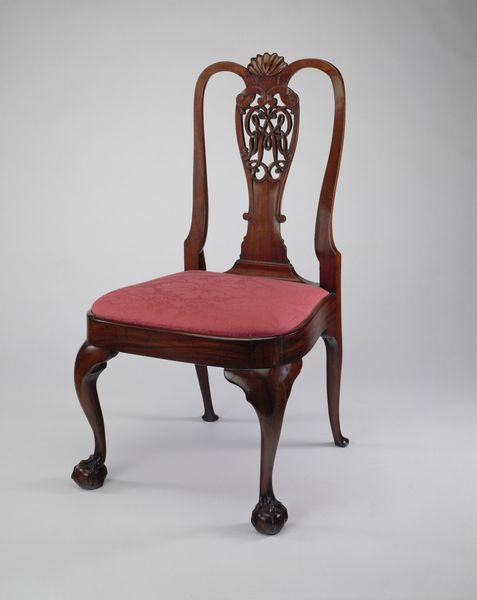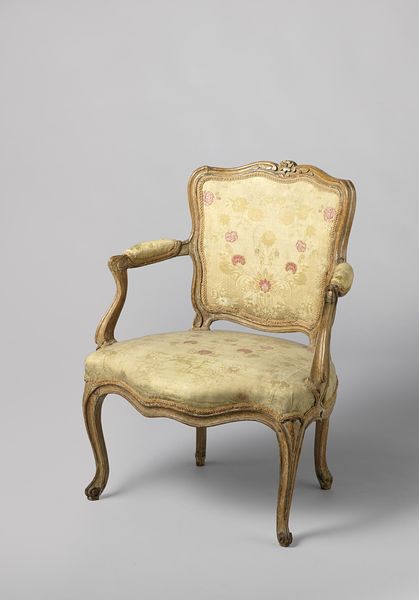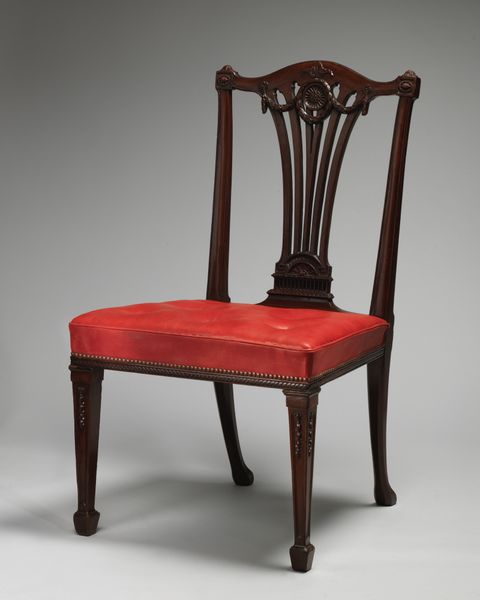
wood
#
portrait
#
furniture
#
ceramic
#
united-states
#
wood
#
decorative-art
Dimensions: 34 3/4 x 23 1/4 x 19 in. (88.3 x 59.1 x 48.3 cm)
Copyright: Public Domain
Curator: Adam Hains crafted this armchair sometime between 1792 and 1797. It resides here at the Metropolitan Museum. What strikes you immediately about it? Editor: The crimson upholstery really pops, and the little brass tacks outlining all the edges lend a touch of understated opulence. It evokes a sense of formality, a quiet dignity, but perhaps also… a certain stiffness? Curator: Yes, the crimson certainly speaks. The choice isn't arbitrary; it signifies power and luxury. Think about who would have been sitting in this chair and the impression they sought to convey. Crimson has long been tied to royalty and the Church. The brass adds a decorative element, drawing the eye to the refined shape. Editor: Seeing all of these decorative furniture pieces on display is intriguing, as they illustrate evolving tastes over time. What I really find myself pondering are the wood joints and all the individual components—I wonder where the raw materials came from, and who precisely performed all the stages of carving and upholstery to complete this. Curator: Fascinating points. And certainly someone was trying to telegraph refinement through particular symbols. Think of the fluted legs – a reference to classical antiquity. We are dealing with a burgeoning Republic yearning for the cultural capital of past empires, looking for ways to suggest rootedness in older tradition. It says so much about the ambitions of the new United States. Editor: It speaks volumes. Beyond the surface aesthetics, though, consider the exploitation embedded in crafting items such as these. From the felling of trees to the finishing touches, laborers, whose stories often remain unheard, contributed to its creation. To me it's an object soaked in economic and social relationships of the period. Curator: Absolutely, those relationships shape what is presented as luxury. That tension is baked right into its cultural resonance today. It also reminds me of the complex web of values we continue to place around objects and design and how taste acts as a social language. Editor: In the end, I think, this single chair encapsulates stories about aspirations, aesthetics, and the tangible means of its making and trade. It offers quite the snapshot of history.
Comments
No comments
Be the first to comment and join the conversation on the ultimate creative platform.
